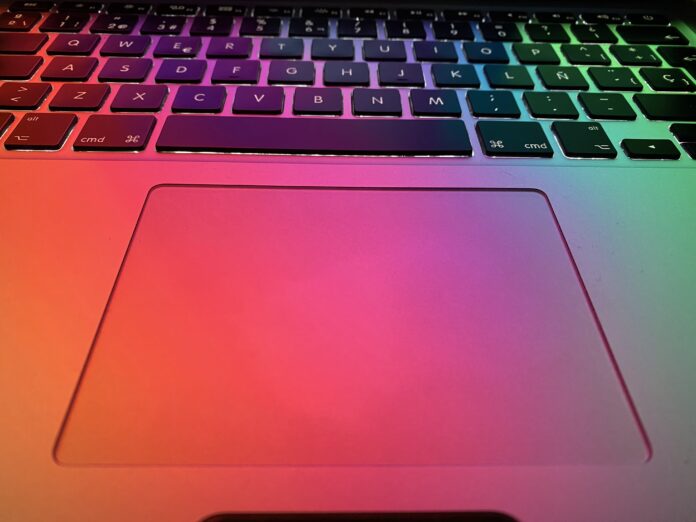Listen to it also on podcast.
Christian Carlos
Since 2008, I have been using an Apple mobile device, namely the iPod touch, which was released with the first generation iPhone. At last, I had found a tiny-sized keyboard with which I could type faster than with a conventional keyboard.
Suddenly, Apple had reinvented the phone...and, with it, the way we interact with graphical interfaces. While iOS has evolved by leaps and bounds in the mobile device industry, it was the first to integrate a multi-touch qwerty keyboard that corrected errors in the blink of an eye, long before you realized you had made a mistake.
My job is to write. Writing correctly, specifically. The Apple ecosystem helps a lot in that regard, but not because of its ability to correct errors, but because of how easy it is to find and solve the most fussy requirements of an obsessed with correct Spanish writing.
So I spent a few weeks with an Android phone, to compare whether that operating system is up to the task of a compulsive writer.
Android learned - not to say copied - the iOS keyboard shortcuts; for example, holding down a key opens a balloon with similar characters - the transition from N to Ñ.
With each generation of iPhone, I always give third-party keyboards - the ones installed in the App Store - a chance, and I always end up deleting them and going back to the default iOS keyboard. If any good ones exist, I would recommend some external keyboard. If you see someone with colored keyboards, they are likely to make more spelling mistakes.
The qwerty keyboard without the letter Ñ is not interpreted as an English keyboard if you choose Spanish as it happens in Android -and third-party keyboards-; on the other hand, if you ask iOS for a Spanish Qwerty keyboard without the letter Ñ, it gives you exactly that: a Spanish Qwerty keyboard that only needs the letter Ñ, but it does not reverse the order of the shortcuts of the letters with tilde, it still suggests the opening question mark and exclamation mark above the closing ones. The order of quotation marks also remains normal.
One day, I met a person dedicated to design -an architect, to be precise- who offered me her contact information and, as I didn't have pen and paper at hand, I gave her my iPhone with a blank contact card and she started writing.
As I finished, he questioned me why the iPhone didn't display the lowercase keyboard. "That's too bad, isn't it?" he said with a tone of hating the iPhone forever.
I nodded out of respect and said nothing. Since iPhoneOS - the original name of the operating system - there was no similar keyboard because there was no market for multi-touch screen phones until Apple came along. The keyboard was very simple, but it worked perfectly, so I got used to the iPhone keyboard. A graphic Qwerty keyboard with uppercase letters only and, to know that you were typing in lowercase, the shift key changed contrast. It was enough. Almost the same as on a computer, where a green light on the Mac's Magic Keyboard comes on to let you know that capitalization is on.
The person who asked me to contact her, the same person who was in the design business, was unaware that my iPhone's keyboard was configured to display only uppercase keys, just as I first used in iPhoneOS 1.1.2 in 2008. A few years later, Apple incorporated lowercase keys, but I turned it off because real life doesn't work that way.
Dissociation is a mental disorder that, according to Mayo Clinic, is the "disconnection and lack of continuity between thoughts, memories, environment, actions and identity."
The design person found it necessary for the iPhone keyboard to forcibly switch to lowercase in order to be able to type in lowercase. Yet another example of how Android can cause dissociative thinking. "Does this person expect the keys to change to lowercase on a physical keyboard? Has this person ever used a Blackberry? Has this person, who is easily twice my age, ever paid attention to how reality works? Has this person ever typed on a computer? On a physical keyboard? Didn't it seem redundant to have the shift key change contrast?"
The comment made by this person was definitely made with an aversion to the iPhone. But it is necessary not to ignore the alternative operation of the realities even if they hurt us because they are better. Yes, the virtual keyboards that Apple has created are superior to the rest of the market. Properly configured, the iPhone keyboard can be the best on any mobile device.
Many are unaware that iOS introduced the Emoji keyboard from very early versions; however, you had to install Japanese-language apps that enabled the keyboard option on the iPhone. Also, with the advent of iOS 7, Apple's keyboard took a major step forward when QuickType was introduced, which anticipates on-screen content for replying to text messages or writing a formal or casual email.
The iPhone keyboard also incorporates a microphone, but that's another topic. Is the iPhone keyboard microphone better than any operating system? Also.



